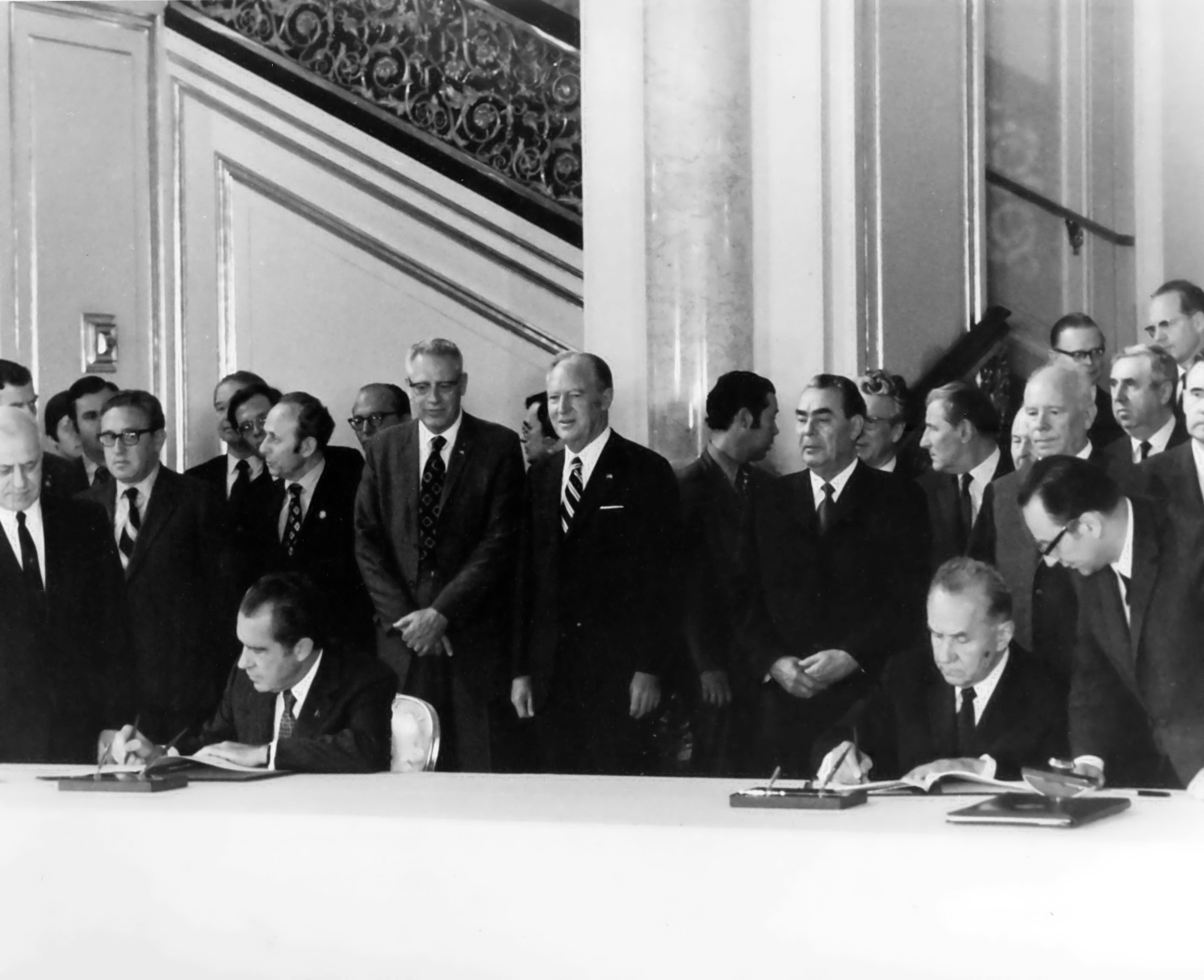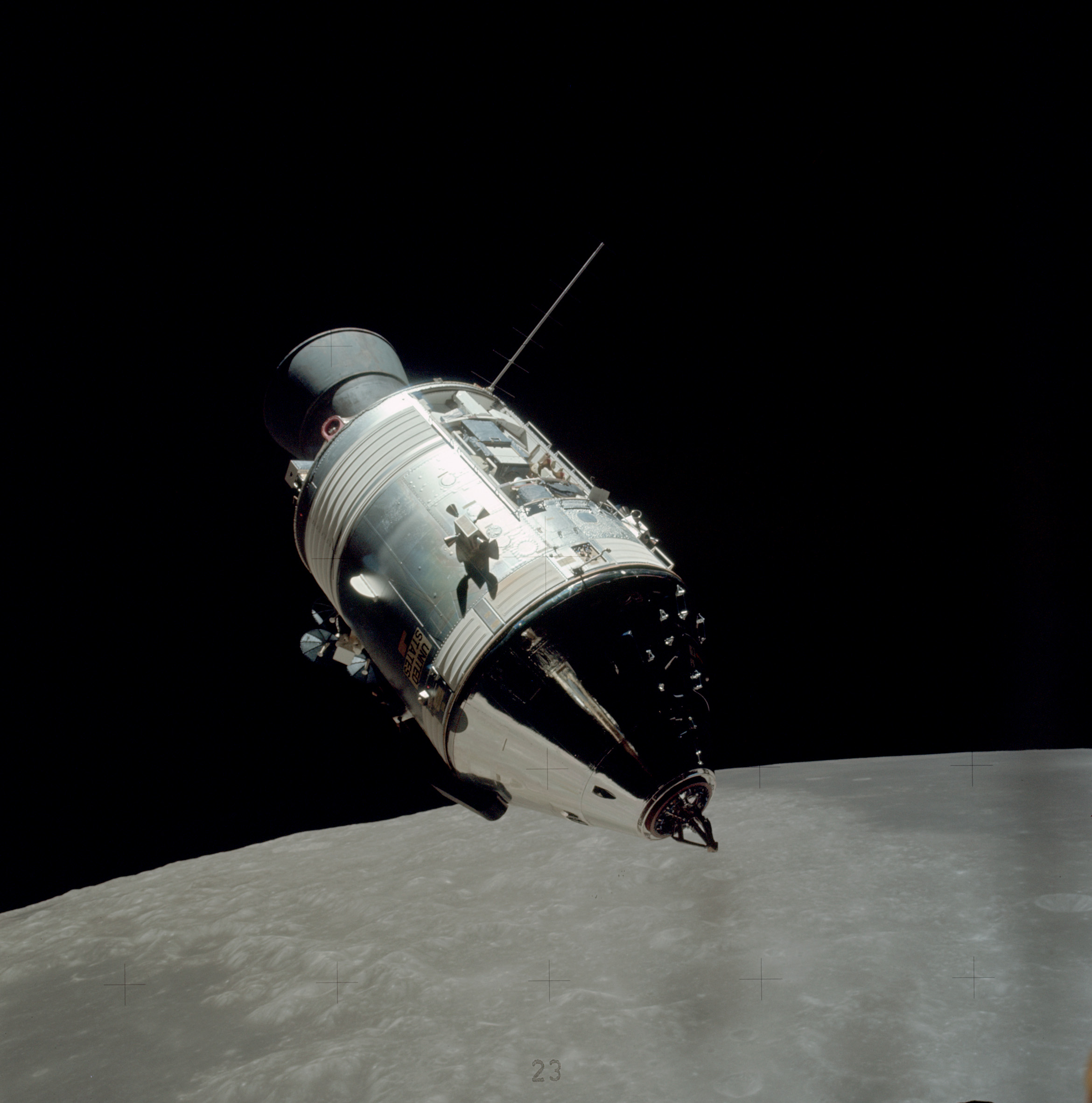|
Soyuz 16
Soyuz 16 (russian: Союз 16, ''Union 16'') was a December, 1974, crewed test flight for a joint Soviet Union, Soviet-United States crewed space mission, space flight which culminated in the Apollo–Soyuz mission in July 1975. The two-man Soviet crew, Anatoly Filipchenko and Nikolai Rukavishnikov, tested a docking ring and other systems to be used in the joint flight. Crew Backup crew Reserve crew Mission parameters *Mass: *Perigee: *Apogee: *Inclination: 51.7° *Period: 88.4 minutes Background The Soyuz 16 mission was the final rehearsal and first crewed mission in a program which culminated in the Apollo–Soyuz (ASTP) mission seven months later. The Soviet Union and the United States, Cold War rivals, had signed several Strategic Arms Limitation Talks, arms control treaties in the 1960s and 1970s, and had entered into a period of detente by the early 1970s. In 1972, a treaty was signed to participate in a joint crewed space flight as a symbol of this ... [...More Info...] [...Related Items...] OR: [Wikipedia] [Google] [Baidu] |
Apollo–Soyuz
Apollo–Soyuz was the first crewed international space mission, carried out jointly by the United States and the Soviet Union in July 1975. Millions of people around the world watched on television as a United States Apollo spacecraft docked with a Soviet Soyuz capsule. The project, and its handshake in space, was a symbol of détente between the two superpowers during the Cold War. The mission was officially known as the Apollo–Soyuz Test Project (ASTP; russian: Экспериментальный полёт «Союз» – «Аполлон» (ЭПАС), translit=Eksperimentalniy polyot Soyuz–Apollon (EPAS), lit=Experimental flight Soyuz-Apollo, and commonly referred to in the Soviet Union as Soyuz–Apollo; the Soviets officially designated the mission as Soyuz 19). The unnumbered American vehicle was left over from the canceled Apollo missions, and was the last Apollo module to fly. The three American astronauts, Thomas P. Stafford, Vance D. Brand, and Deke Slayton, ... [...More Info...] [...Related Items...] OR: [Wikipedia] [Google] [Baidu] |
Soviet Union
The Soviet Union,. officially the Union of Soviet Socialist Republics. (USSR),. was a transcontinental country that spanned much of Eurasia from 1922 to 1991. A flagship communist state, it was nominally a federal union of fifteen national republics; in practice, both its government and its economy were highly centralized until its final years. It was a one-party state governed by the Communist Party of the Soviet Union, with the city of Moscow serving as its capital as well as that of its largest and most populous republic: the Russian SFSR. Other major cities included Leningrad (Russian SFSR), Kiev (Ukrainian SSR), Minsk ( Byelorussian SSR), Tashkent (Uzbek SSR), Alma-Ata (Kazakh SSR), and Novosibirsk (Russian SFSR). It was the largest country in the world, covering over and spanning eleven time zones. The country's roots lay in the October Revolution of 1917, when the Bolsheviks, under the leadership of Vladimir Lenin, overthrew the Russian Provisional Government ... [...More Info...] [...Related Items...] OR: [Wikipedia] [Google] [Baidu] |
Kosmos 638
Kosmos 638 (russian: Космос 638) was an uncrewed test of the 1975 Apollo–Soyuz Test Project Soyuz. It carried an APAS-75 androgynous docking system. This was followed by another uncrewed test of this spacecraft type, Kosmos 672. It was a Soyuz 7K-TM The 1975 Apollo–Soyuz Test Project version of the Soyuz spacecraft (Soyuz 7K-TM) served as a technological bridge to the third generation Soyuz-T (T - транспортный, ''Transportnyi'' meaning transport) spacecraft (1976–1986). T ... spacecraft. When the air was released from the orbital module (which is ejected before re-entry of the capsule) it caused unexpected motions with the spacecraft. This led to the next test also being uncrewed. Mission parameters *Spacecraft: Soyuz-7K-TM №71 *Mass: 6510 to 6680 kg *Crew: None *Launched: April 3, 1974 *Landed: April 13, 1974 References *Mir Hardware Heritage ''Mir Hardware Heritage'' (NASA report RP 1357) (PDF format)** ''Mir Hardware Heritage'' (NASA repo ... [...More Info...] [...Related Items...] OR: [Wikipedia] [Google] [Baidu] |
Salyut
The ''Salyut'' programme (russian: Салют, , meaning "salute" or "fireworks") was the first space station programme, undertaken by the Soviet Union. It involved a series of four crewed scientific research space stations and two crewed military reconnaissance space stations over a period of 15 years, from 1971 to 1986. Two other ''Salyut'' launches failed. In one respect, ''Salyut'' had the task of carrying out long-term research into the problems of living in space and a variety of astronomical, biological and Earth-resources experiments, and on the other hand the USSR used this civilian programme as a cover for the highly secretive military ''Almaz'' stations, which flew under the ''Salyut'' designation. ''Salyut'' 1, the first station in the programme, became the world's first crewed space station. ''Salyut'' flights broke several spaceflight records, including several mission-duration records, and achieved the first orbital handover of a space station from one crew ... [...More Info...] [...Related Items...] OR: [Wikipedia] [Google] [Baidu] |
Apollo Spacecraft
The Apollo spacecraft was composed of three parts designed to accomplish the American Apollo program's goal of landing astronauts on the Moon by the end of the 1960s and returning them safely to Earth. The expendable (single-use) spacecraft consisted of a combined command and service module (CSM) and an Apollo Lunar Module (LM). Two additional components complemented the spacecraft stack for space vehicle assembly: a spacecraft–LM adapter (SLA) designed to shield the LM from the aerodynamic stress of launch and to connect the CSM to the Saturn launch vehicle and a launch escape system (LES) to carry the crew in the command module safely away from the launch vehicle in the event of a launch emergency. The design was based on the lunar orbit rendezvous approach: two docked spacecraft were sent to the Moon and went into lunar orbit. While the LM separated and landed, the CSM remained in orbit. After the lunar excursion, the two craft rendezvoused and docked in lunar orbit ... [...More Info...] [...Related Items...] OR: [Wikipedia] [Google] [Baidu] |
Skylab
Skylab was the first United States space station, launched by NASA, occupied for about 24 weeks between May 1973 and February 1974. It was operated by three separate three-astronaut crews: Skylab 2, Skylab 3, and Skylab 4. Major operations included an orbital workshop, a solar observatory, Earth observation, and hundreds of experiments. Unable to be re-boosted by the Space Shuttle, which was not ready until 1981, Skylab's orbit eventually decayed, and it disintegrated in the atmosphere on July 11, 1979, scattering debris across the Indian Ocean and Western Australia. Overview Skylab was the only space station operated exclusively by the United States. A permanent station was planned starting in 1988, but funding for this was canceled and replaced with United States participation in an International Space Station in 1993. Skylab had a mass of with a Apollo command and service module (CSM) attached and included a workshop, a solar observatory, and several hundred life sc ... [...More Info...] [...Related Items...] OR: [Wikipedia] [Google] [Baidu] |
Soyuz Spacecraft
Soyuz () is a series of spacecraft which has been in service since the 1960s, having made more than 140 flights. It was designed for the Soviet space program by the Korolev Design Bureau (now Energia). The Soyuz succeeded the Voskhod spacecraft and was originally built as part of the Soviet crewed lunar programs. It is launched on a Soyuz rocket from the Baikonur Cosmodrome in Kazakhstan. Between the 2011 retirement of the Space Shuttle and the 2020 demo flight of SpaceX Crew Dragon, the Soyuz served as the only means to ferry crew to or from the International Space Station, for which it remains heavily used. Although China did launch crewed Shenzhou flights during this time, none of them docked with the ISS. History The first Soyuz flight was uncrewed and started on 28 November 1966. The first Soyuz mission with a crew, Soyuz 1, launched on 23 April 1967 but ended with a crash due to a parachute failure, killing cosmonaut Vladimir Komarov. The following flight was uncrew ... [...More Info...] [...Related Items...] OR: [Wikipedia] [Google] [Baidu] |
Cold War
The Cold War is a term commonly used to refer to a period of geopolitical tension between the United States and the Soviet Union and their respective allies, the Western Bloc and the Eastern Bloc. The term '' cold war'' is used because there was no large-scale fighting directly between the two superpowers, but they each supported major regional conflicts known as proxy wars. The conflict was based around the ideological and geopolitical struggle for global influence by these two superpowers, following their temporary alliance and victory against Nazi Germany and Imperial Japan in 1945. Aside from the nuclear arsenal development and conventional military deployment, the struggle for dominance was expressed via indirect means such as psychological warfare, propaganda campaigns, espionage, far-reaching embargoes, rivalry at sports events, and technological competitions such as the Space Race. The Western Bloc was led by the United States as well as a number of other First W ... [...More Info...] [...Related Items...] OR: [Wikipedia] [Google] [Baidu] |
Aleksandr Ivanchenkov
Aleksandr Sergeyevich Ivanchenkov (russian: Алекса́ндр Серге́евич Иванче́нков; born 28 September 1940 ) is a retired Soviet cosmonaut who flew as Flight Engineer on Soyuz 29 and Soyuz T-6, he spent 147 days, 12 hours and 37 minutes in space. Biography Ivanchenkov is married with one child. He was selected as a cosmonaut on 27 March 1973. He retired on 3 November 1993. Honours and awards *Twice Hero of the Soviet Union; *Pilot-Cosmonaut of the USSR; *Two Orders of Lenin; *Medal "For Merit in Space Exploration" (Russian Federation); *Hero of the German Democratic Republic; *Order of Karl Marx; *Commander of the Legion of Honour (France); *Cross of Grunwald 3rd class. See also *Spaceflight records Records and firsts in spaceflight are broadly divided into crewed and uncrewed categories. Records involving animal spaceflight have also been noted in earlier experimental flights, typically to establish the feasibility of sending humans to ou ... ... [...More Info...] [...Related Items...] OR: [Wikipedia] [Google] [Baidu] |
Yuri Romanenko
Yuri Viktorovich Romanenko (russian: Ю́рий Ви́кторович Романе́нко; born 1 August 1944) is a former Soviet cosmonaut, twice Hero of the Soviet Union (March 16, 1978 and September 26, 1980). Over his career, Yuri Romanenko spent a total of 430 days 20 hours 21 minutes 30 seconds in space and 18 hours in space walks. In 1987 he was a resident of the Mir space station, launching on Soyuz TM-2 and landing aboard Soyuz TM-3. He remained on Mir for 326 days; that was the longest stay in space at that time. His son, Roman Romanenko is also a cosmonaut, and has become the third second-generation space traveler on Soyuz TMA-15 in May 2009. Early life Yuri Romanenko was born on August 1, 1944, in Koltubanovskiy village in Orenburg Oblast, Soviet Union. His father was a senior commander on military ships, and mother was a combat medic. His family later moved to Kaliningrad, where he graduated from a secondary school in 1961. His hobbies in school included building ... [...More Info...] [...Related Items...] OR: [Wikipedia] [Google] [Baidu] |




.jpg)

.png)
